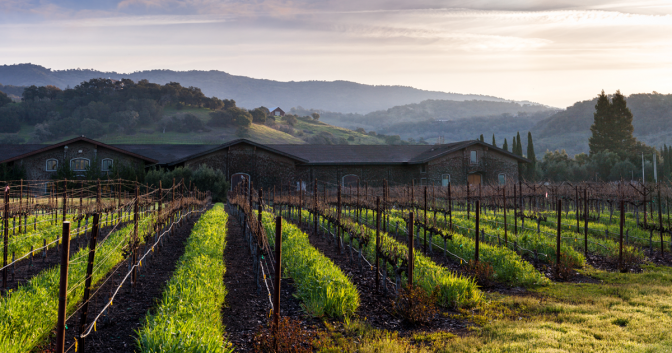Cannabis Companies Are Exploring the Winery Model

As it winds up and down the California coast, Highway 101 often shifts from a four-lane highway to a two-lane country road. North of San Francisco, the urban scenery gives way to a rural landscape. Much of the food and wine consumed in the U.S. comes from California—as does most of the cannabis. As legalization takes hold in the Golden State, how will the intersection between tourism, cannabis and a growing interest in food production affect the northern counties renowned as the “Emerald Triangle”?
Recent documentaries like Fed Up and In Defense of Food have prompted people to think more about where their food comes from. We’ve already seen this trend with wine; California hosts countless wine lovers seeking a deeper connection to the grape and the vintner.
The sources of cannabis sold in dispensaries used to be a mystery. Like a wine section at Safeway filled with store-brand merlots and cabernets, cannabis flowers were labeled with the name of the dispensary and nothing more. With the introduction of licensing and regulations, farmers are coming out of the shadows with increased comfort to promote themselves and their craft. Consumers are starting to develop product loyalty, and with that, the desire to see the farm and meet the people responsible.
The Emerald Triangle—Mendocino, Humboldt and Trinity counties—has long had the reputation as the world’s premier cannabis growing region. This is largely due to their microclimates, unique soil and optimal growing environment. However, because of prohibition, farmers stayed underground. In the new world of legalization, one can easily imagine these farms hosting the same folks who travel north on 101 to visit the wineries. The offerings are already underway.
I recently relocated from the Bay Area to the Flow Cannabis Institute in Redwood Valley in Mendocino. Located on 80 acres previously owned by the Fetzer wine family, we’re creating a retreat and education center where visitors can meet the farmers who grow their cannabis and learn more about their techniques, all in a beautiful winery-like setting.
Now that cannabis legalization is becoming a reality in tourist-heavy states like California, it’s the industry’s responsibility to create opportunities for people to make connections to the plants, the farmers and the local environments. With food and farming consciousness on the rise, the cannabis industry and its related tourism are starting to create opportunities to meet this growing demand.
If you enjoyed this Freedom Leaf article, subscribe to the magazine today!
